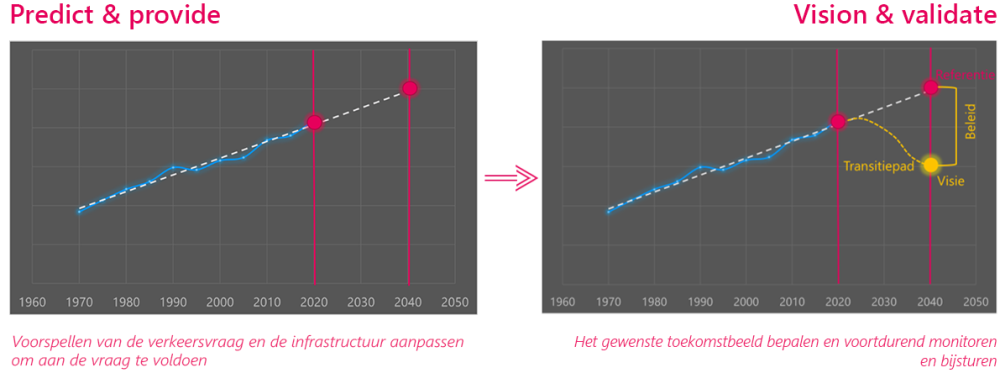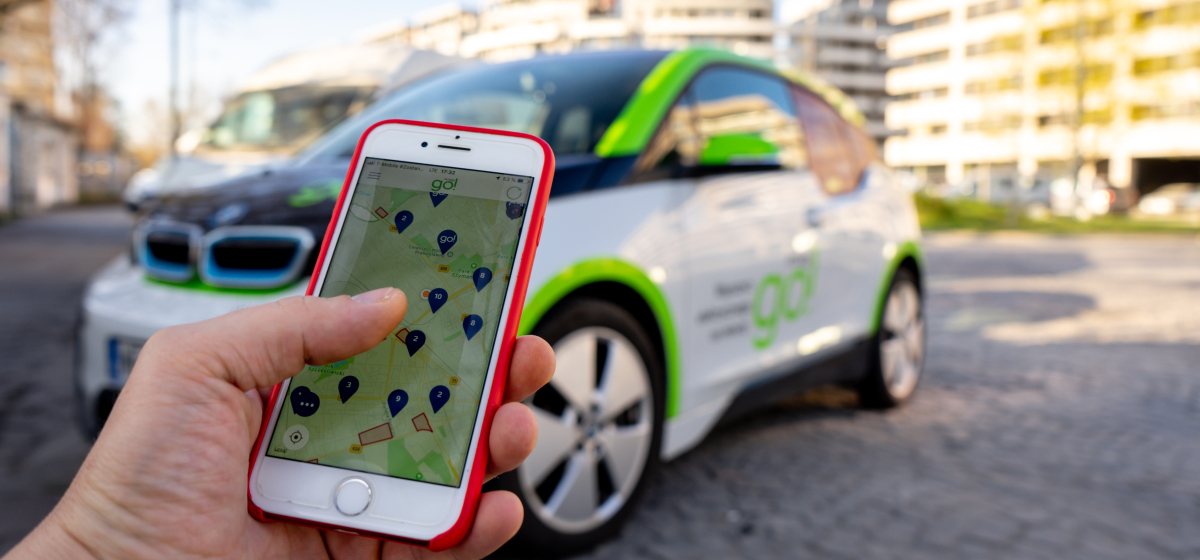Achieving a better future with system dynamics
We can no longer plan mobility the way we used to. Major changes like meeting climate targets and fulfilling the housing challenge, affect our mobility policy. But planning for a different future involves great uncertainty. How do you realise a new vision of mobility in an ever-changing world? How do you reduce uncertainty in relation to decision-making? With our approach based on systems thinking, you as a policymaker get a grip on the development of your mobility policy.
From ‘predict and provide’ to ‘vision and validate’
Traditionally, mobility policy decisions are often made on the basis of forecasts that build on historical trends, aka 'predict and provide'. Developments such as the mobility transition, the housing challenge and the climate issue, on the contrary, require us to depart from trends. This requires a new vision of the future of mobility. Realising this will require both a different policy and behavioural change. We also need a set of instruments to continuously measure and adjust the newly initiated course. We call this 'vision and validate'.

A new methodology for developing mobility policies
To come up with new insights and solutions, as well as ways to realise them, we need to adapt our current methodologies and use them in other ways. There is also a need for a new methodology that:
- puts mobility policy in a broader context. Mobility never stands alone but is an integral part of a bigger picture;
- clarifies how different factors within the mobility system interact and influence each other;
- clarifies which external factors influence the mobility system;
- shows changes over time of the various factors inside and outside the mobility system;
- provides more flexibility for interim evaluation and adjustment of mobility policy;
- can be used exploratively to visualise the effects of new techniques or mobility services, for example, even if we do not yet know exactly what they will look like;
- can feed standard traffic models with alternative scenarios for the future.
System dynamics as method for handling uncertainty
System dynamics is a holistic approach that focuses on understanding the complexity of systems and how they change over time. One of the main benefits of systems thinking is that it helps us understand and predict the consequences of our actions.
Our approach

"We offer action perspectives by capturing uncertainty at the system level as we plan for transitions in a fast-moving world."
Oproep tot co-creatie
Samen met ons nadenken over hoe mobiliteit er in de toekomst uit moet zien en hoe we dat toekomstbeeld kunnen realiseren? Door middel van co-creatie onderzoeken we graag samen met u de toepassing en doorontwikkeling van systeemdenken.
Lees hier meer over de mogelijkhedenWhy us?
- Our system dynamics methodology is not a black box but highly transparent. We show what data, knowledge and intelligence we add to achieve the intended effect.
- Our system dynamics methodology is based on a wide variety of (scientific) sources:
- Public data sources such as data from CBS, PBL, ODIN, World Bank, etc. that provide insight into factors such as population growth, migration, inflation, general welfare, etc.
- Data sources developed by Goudappel itself such as OmniTRANS Spectrum, the NVP, or data derived from our traffic models.
- Scientific models such as gravity model, transport mode choice model, four-step model, etc.
- Literature studies related to other system dynamic models such as Sterman's basic mobility model (2000).
- The expertise and decades of experience of our consultants who can understand the field of mobility in its breadth.
- Where uncertainty exists because there is still too little empirical data available, we organise workshops and try to specify links to bring expert knowledge to the surface.
- Goudappel has both the data to feed the system thinking methodology and the knowledge and experience to interpret the outcomes and link concrete action perspectives to them.

